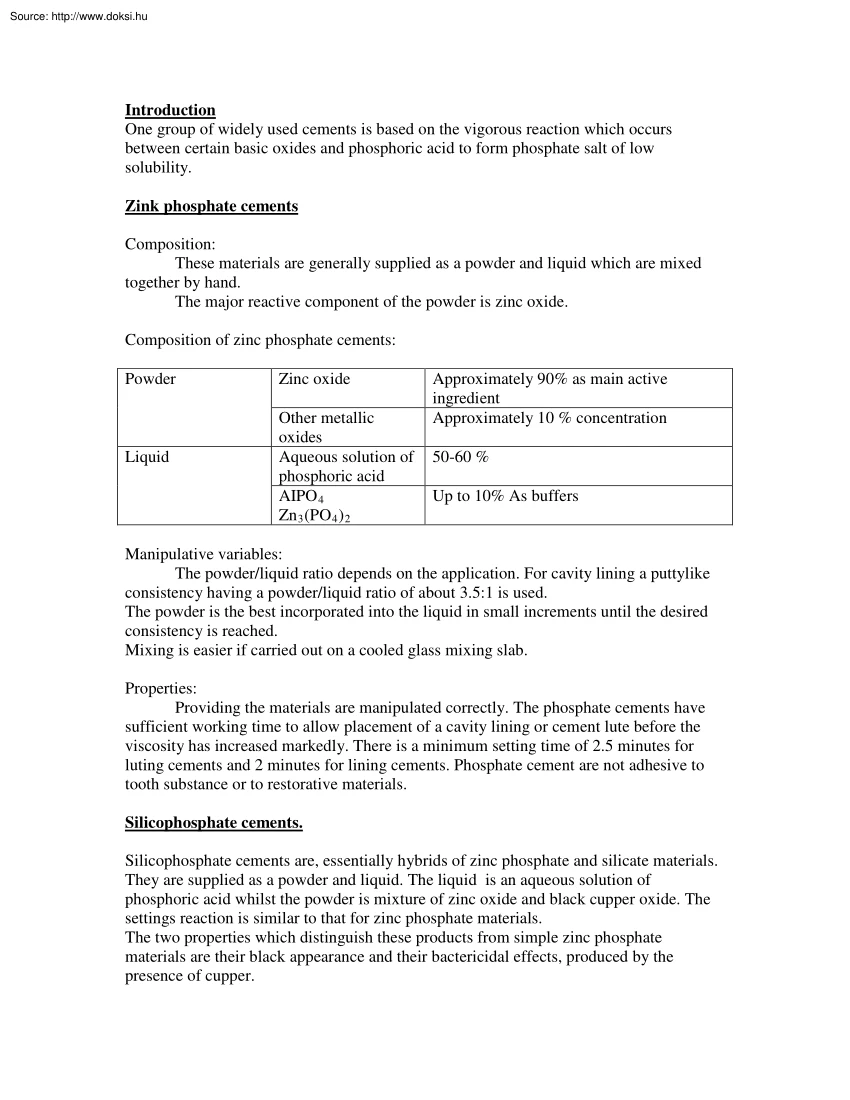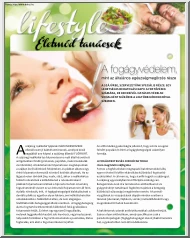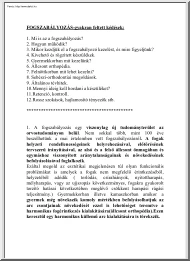Datasheet
Year, pagecount:2004, 1 page(s)
Language:English
Downloads:13
Uploaded:November 25, 2011
Size:11 KB
Institution:
-
Comments:
Attachment:-
Download in PDF:Please log in!
Comments
No comments yet. You can be the first!
Most popular documents in this category
Content extract
Introduction One group of widely used cements is based on the vigorous reaction which occurs between certain basic oxides and phosphoric acid to form phosphate salt of low solubility. Zink phosphate cements Composition: These materials are generally supplied as a powder and liquid which are mixed together by hand. The major reactive component of the powder is zinc oxide. Composition of zinc phosphate cements: Powder Liquid Zinc oxide Other metallic oxides Aqueous solution of phosphoric acid AIPO 4 Zn 3 (PO 4 ) 2 Approximately 90% as main active ingredient Approximately 10 % concentration 50-60 % Up to 10% As buffers Manipulative variables: The powder/liquid ratio depends on the application. For cavity lining a puttylike consistency having a powder/liquid ratio of about 3.5:1 is used The powder is the best incorporated into the liquid in small increments until the desired consistency is reached. Mixing is easier if carried out on a cooled glass mixing slab. Properties: Providing the
materials are manipulated correctly. The phosphate cements have sufficient working time to allow placement of a cavity lining or cement lute before the viscosity has increased markedly. There is a minimum setting time of 25 minutes for luting cements and 2 minutes for lining cements. Phosphate cement are not adhesive to tooth substance or to restorative materials. Silicophosphate cements. Silicophosphate cements are, essentially hybrids of zinc phosphate and silicate materials. They are supplied as a powder and liquid. The liquid is an aqueous solution of phosphoric acid whilst the powder is mixture of zinc oxide and black cupper oxide. The settings reaction is similar to that for zinc phosphate materials. The two properties which distinguish these products from simple zinc phosphate materials are their black appearance and their bactericidal effects, produced by the presence of cupper
materials are manipulated correctly. The phosphate cements have sufficient working time to allow placement of a cavity lining or cement lute before the viscosity has increased markedly. There is a minimum setting time of 25 minutes for luting cements and 2 minutes for lining cements. Phosphate cement are not adhesive to tooth substance or to restorative materials. Silicophosphate cements. Silicophosphate cements are, essentially hybrids of zinc phosphate and silicate materials. They are supplied as a powder and liquid. The liquid is an aqueous solution of phosphoric acid whilst the powder is mixture of zinc oxide and black cupper oxide. The settings reaction is similar to that for zinc phosphate materials. The two properties which distinguish these products from simple zinc phosphate materials are their black appearance and their bactericidal effects, produced by the presence of cupper





 Just like you draw up a plan when you’re going to war, building a house, or even going on vacation, you need to draw up a plan for your business. This tutorial will help you to clearly see where you are and make it possible to understand where you’re going.
Just like you draw up a plan when you’re going to war, building a house, or even going on vacation, you need to draw up a plan for your business. This tutorial will help you to clearly see where you are and make it possible to understand where you’re going.